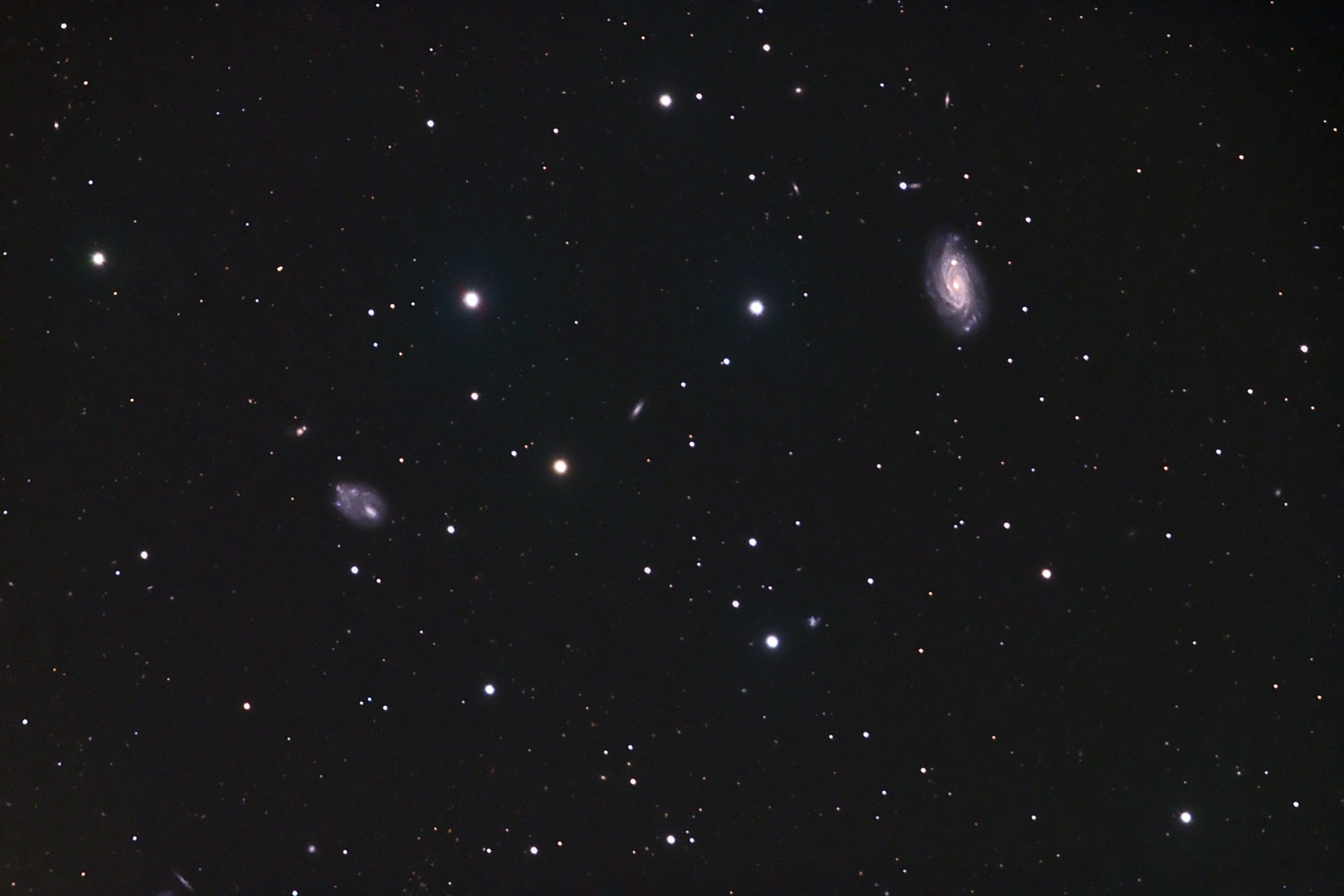| Description | Images |
Object name: NGC5012ADesignation(s): NGC5012A, Usually, it is the major NGC galaxy I'm featuring not its sidekick. In this case, the sidekick is NGC 5012A. Probably a better name would be UGC 08290 or PGC 45884. It is what I call a "sloshed" galaxy. This is in the sense of how the yoke of a fried egg can be moved off center by moving the frypan before it sets. The galaxy's core is far off-center. That's certainly the case with this galaxy. Sometimes you can see the other half of the galaxy is there, just very faint due to a lack of bright stars. NGC 5474 near M101 is an example. In its case, it is thought its interaction with M101 caused the "sloshed" effect. You can see the rest of it faintly in my image of it. But with NGC 5012A I see no hint of the "other side". Also, NGC 5012 doesn't appear distorted enough to have had a serious gravitational interaction with it. They are at about the same distance by redshift, 130 million light-years away. Related Designation(s):2MASS J13124181+2249474, 2MASX J13124175+2249469, 2MASXi J1312417+224946, Aparition, ASK 663376.0, CGCG 130-020, CGCG 1310.2+2306, ECO 03957, EVCC 1318, IRAS 13103+2305, IRAS F13102+2306, KUG 1310+230, LGG 336:[G93] 002, MAPS-NGP O_379_0539765, MCG +04-31-014, NGC 5012A, NGC5012A, NGP9 F379-0539765, NSA 119289, PGC 045884, SDSS J131241.78+224947.2, UGC 08290, UZC J131241.8+224947, VIII Zw 262, VV 559, [TTL2012] 333893, [ZSK75] 1310.2+2306, |
